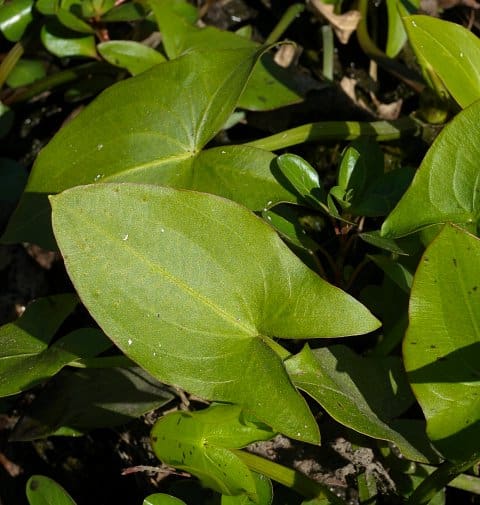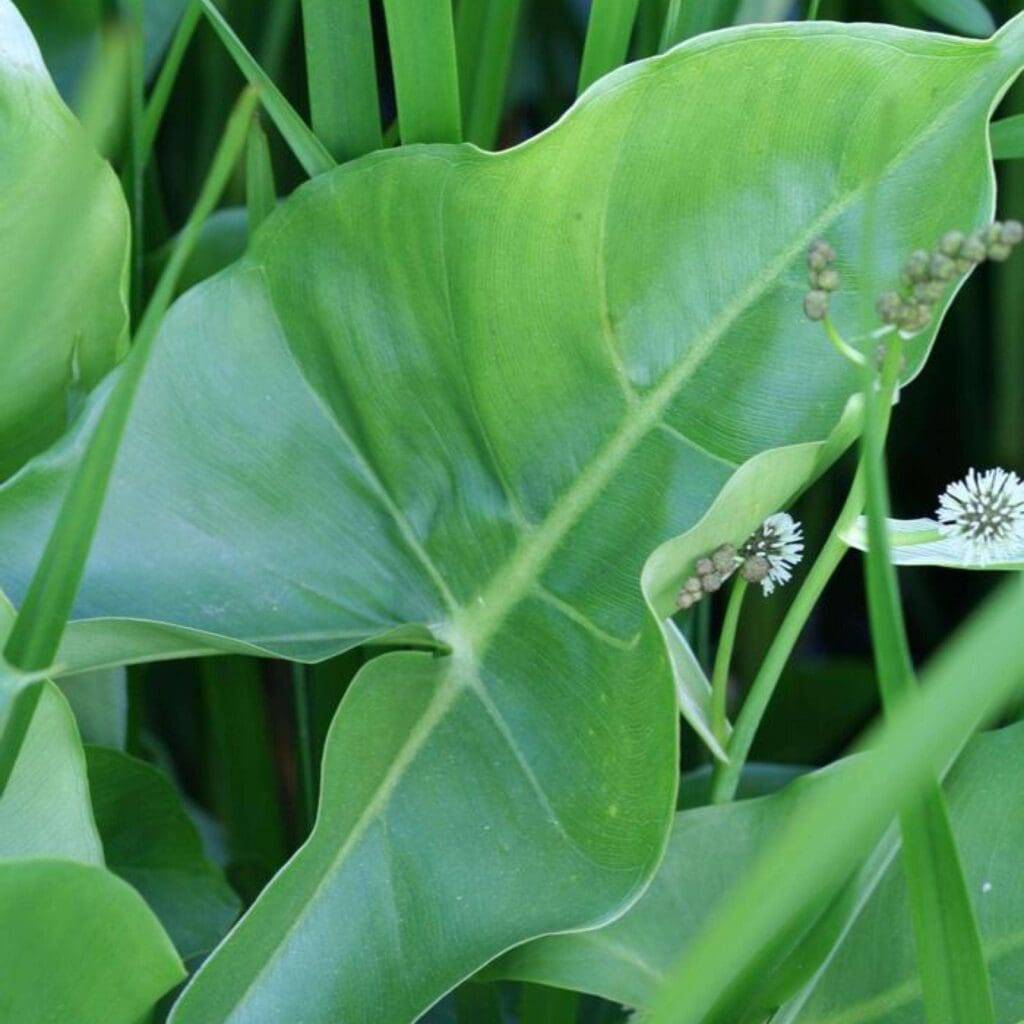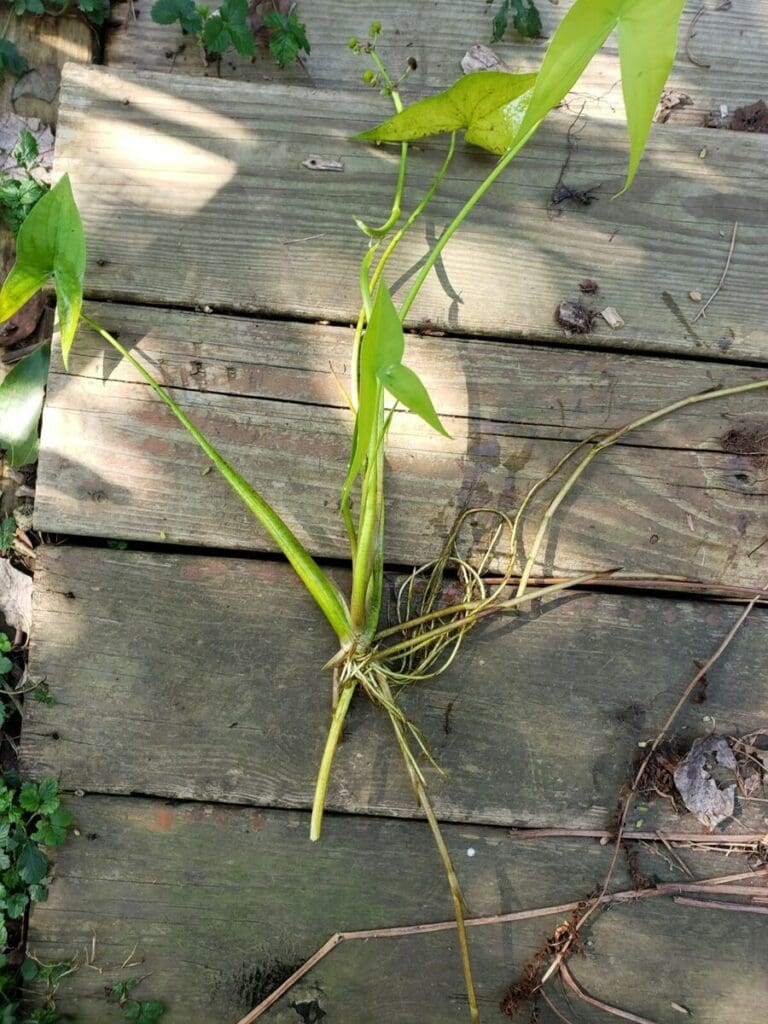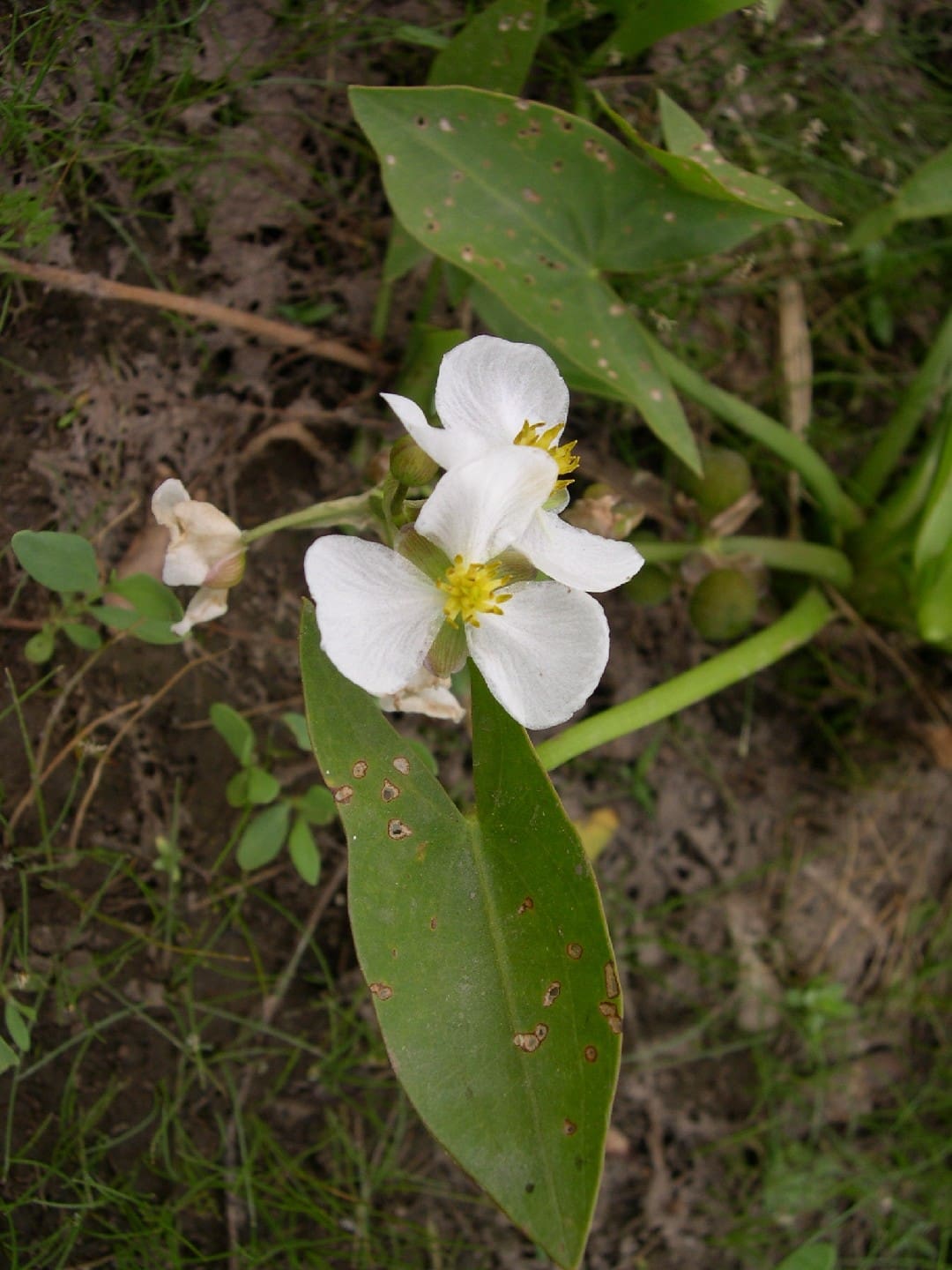In this exploration of the aquatic plant Arumleaf Arrowhead, you will be entranced by its unique botanical characteristics, its captivating ecological significance, and the role it plays in various cultures around the world. Through this exposé, you are invited to unearth the fascinating facts and figures of this water-dwelling flora; from the subtle intricacies of its life cycle to its potential beneficial applications. Essentially, this is a comprehensive discourse meticulously designed to enlighten your perspective on the distinctive identity of the Arumleaf Arrowhead.

Understanding Aquatic Plants
What are aquatic plants?
Aquatic plants, as the name implicates, are plants that are adapted to live in water. These plants have unique features that allow them to survive in aquatic conditions, including submerged in water, floating on the surface, rooted in wet soils, or even adjusted to variations in water levels. They play a pivotal role in maintaining the health and balance of various aquatic environments, contributing to the complexity and richness of these ecosystems.
Types of aquatic plants
There is a staggering diversity of aquatic plants encompassing a broad range of morphological adaptations. They are typically categorized based on their position relative to the water’s surface: submerged, floating, and emergent. Submerged plants live entirely beneath the water’s surface with roots buried in the bottom substrate, floating plants float on the water surface with freely hanging roots, and emergent plants are rooted in the substrate but have portions above the water surface.
Functions and roles of aquatic plants in ecosystems
Aquatic plants fulfill crucial functions in freshwater ecosystems. They serve as food sources and habitat to various aquatic creatures and even play roles in creating micro-habitats, providing spaces for breeding, hiding, and seeking food. Their roots help in stabilizing the substrate, thereby reducing erosion. They also play a role in nutrient cycling, particularly in absorbing excess nutrients and purifying the water – a process often capitalized upon in waste water treatments.
Overview of Arumleaf Arrowhead
Definition and basic information about Arumleaf Arrowhead
The Arumleaf Arrowhead, scientifically known as Sagittaria cuneata, is an aquatic perennial plant recognized for its distinctive arrowhead-shaped leaves. It has a robust growth habit, typically reaching a height of up to 60 cm. This plant is often graced with three-petaled white flowers during the blooming season that extend on long stalks above the leaves.
Classification of Arumleaf Arrowhead
Arumleaf Arrowhead belongs to the family Alismataceae, commonly known as the water-plantain family. As with all plants, its classification is characterized by a hierarchy of taxa, ranging from the broader order Alismatales down to its specific species name, Sagittaria cuneata.
Environment and Habitats of Arumleaf Arrowhead
Typical environments where Arumleaf Arrowhead thrives
This hardy plant thrives in a variety of wetland conditions. It is commonly found on the margins of ponds, in marshes, bogs, and wet meadows. It can withstand both stagnant and slow-flowing waters. Provided the condition remains wet, the Arumleaf Arrowhead exhibits great adaptability in various degrees of water depth and soil types, although it prefers slightly acidic conditions.
Global distribution of Arumleaf Arrowhead
Arumleaf Arrowhead is indigenous to North America but enjoys a wide global distribution. It is found extensively in the United States and Canada, and its presence has been documented in certain parts of Europe. It can adapt to different climatic zones, including temperate, cold, and boreal climates, further reflecting the plant’s adaptability.
Physiological Features of Arumleaf Arrowhead
Physical structure and appearance of Arumleaf Arrowhead
Arumleaf Arrowhead is characterized by broad, arrowhead-shaped leaves, which are smooth and succulent in texture. The plant produces three-petaled white flowers, each petal adorned with a purple spot at the base. The flowers bloom from late spring until fall. The plant produces tubers for reproduction and survival over cold seasons.
Growth pattern and life cycle
The Arumleaf Arrowhead typically sprouts in spring when the soil warms up and continues to grow throughout the hot summer season. It enters dormancy at the end of the fall season. During the fall, it develops tubers that persist through winter, allowing the plant to re-sprout when conditions become favorable in the following spring.
Adaptations to aquatic Environment
Adaptations such as air-filled cavities known as aerenchyma in the roots support oxygen supply to submerged portions of the plant. The plant’s shape allows it to capture sunlight efficiently, and its preference for growing in large colonies helps in minimizing lost nutrients.

Biodiversity of Arumleaf Arrowhead
Varieties and subspecies of Arumleaf Arrowhead
Arumleaf Arrowhead is representative of the diversity within the Sagittaria genus. While Sagittaria cuneata remains the widely known and recognized Arumleaf arrowhead, variations at species level do exist; these largely manifest in differences in mature leaf shape, and color and size of flowers and seeds.
Unique characteristics of different variants
Different variants within the Arumleaf Arrowhead group display unique adaptations. Some varieties show the ability to survive in relatively drier conditions, others exhibit variations in the size and color of their flowers.
Interactions with Other Organisms
Role in aquatic food chains
In the ecosystem, the Arumleaf Arrowhead stands as an important primary producer, providing food and oxygen for a range of organisms, from small insects, snails and crustaceans to larger species like birds and mammals.
Predators and pests of Arumleaf Arrowhead
Arumleaf Arrowhead’s primarily threat in the wild are herbivores. Waterfowl, in particular, are known to eat the leaves, seeds and tubers of the plant. Certain insects also infest the plant, particularly those adapted to aquatic environments.
Benefits to other organisms
Arumleaf Arrowhead plays a major role in stabilizing the water body’s substrate and in mitigating erosion, providing a safe anchor point for other aquatic plants. Its broad leaves provide shade and shelter to many aquatic species.

Cultivation and Care of Arumleaf Arrowhead
Ideal conditions for growth
Arumleaf Arrowhead requires a sunlit environment, with wet, acidic soil for optimal growth. While the plant can endure standing water, it can also survive in soil that is merely moist.
Common diseases and pests
Root rot can impact Arumleaf Arrowhead when the soil is poorly drained. Pests that can harm these plants are typically water-borne creatures, like the aquatic leaf beetle, which eats the foliage.
Maintenance routines
Minimal maintenance is required for cultivating Arumleaf Arrowhead. It’s suggested to regularly prune dead leaves and excess growth to maintain healthy colonies.
Human Uses and Significance of Arumleaf Arrowhead
Importance for fresh water bodies clean-up
Due to their function in nutrient cycling, Arumleaf Arrowheads are deployed in the bioremediation of fresh water bodies. They absorb harmful nitrates and phosphates, thus purifying the water and improving its quality.
Ornamental uses
Arumleaf Arrowhead serves as a great addition to home ponds or water gardens due to its beauty and hardiness. Its distinctive leaves, attractive flowers, and ability to withstand a range of conditions make it a preferred aquatic plant for both indoor and outdoor water features.
Edibility and nutritional facts
The tubers of Arumleaf Arrowhead are edible; they were used as a food source by some Native American tribes. The tubers are rich in starch and provide a similar nutrient profile to potatoes. However, they should be properly cooked before consumption to eliminate any potential toxins.

Threats and Conservation of Arumleaf Arrowhead
Main threats to Arumleaf Arrowhead
The main threats to Arumleaf Arrowhead are habitat loss and degradation, primarily from human activities such as damming, draining of wetlands, pollution and invasive species. Climate change is also a concern, potentially adjusting water regimes that this plant species relies on.
Conservation efforts and measures
Conservation efforts for the Arumleaf Arrowhead largely revolve around the preservation and restoration of its natural habitats. Its role within the ecosystem also warrants indirect conservation through measures such as watershed protection and management of invasive species.
Status on global conservation lists
Currently, Arumleaf Arrowhead is not listed as endangered or threatened under any major global conservation bodies. However, at smaller regional and national scales, it is considered at risk in several areas, mainly due to habitat degradation.
Research and Studies on Arumleaf Arrowhead
Current and notable past research
Considerable research has emerged focused on the Arumleaf Arrowhead due to its economic and ecological significance. Studies have concentrated on its physiology, genetic diversity, seed propagation, and its role in wetland ecosystems. The plant’s ability to absorb pollutants has also been explored for developing green technologies.
Significant findings and studies
One significant finding is the Arumleaf Arrowhead’s ability to absorb heavy metals, making it a promising candidate for phytoremediation. Another key finding is related to seeds germination that can help in artificial propagation and reintroduction of this plant to Nature.
Potential areas for future research
Future research may delve into a deeper understanding of the plant’s genetics, long-term survival strategies, and its resilience to climate change. Other avenues to explore may involve its potential in supporting biodiversity, particularly in urban wetlands.

